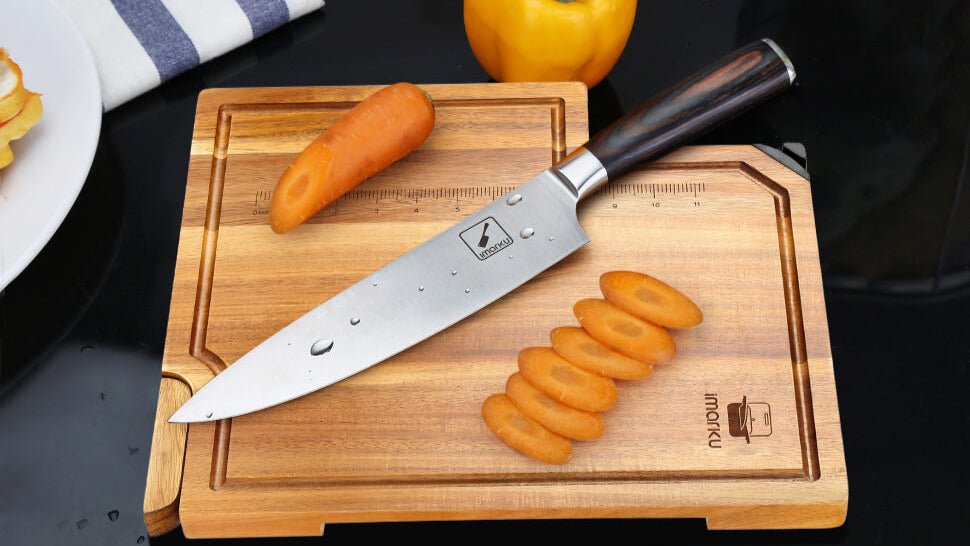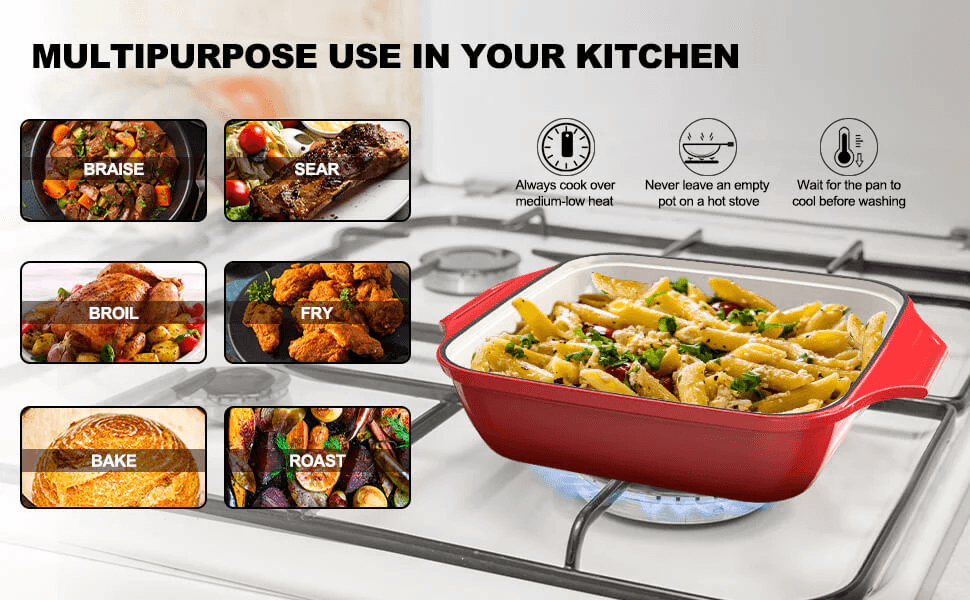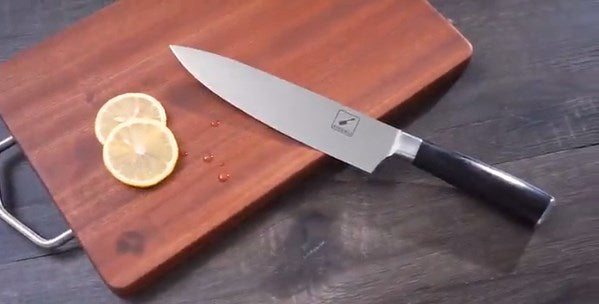TABLE OF CONTENTS
A good cutting chopping board plays a vital role in your kitchen. Despite its understated role in most kitchens, it's game-changing kitchen equipment. It helps make slicing, dicing, and cutting ingredients or food easy and saves your cutlery from damages or cracks. Cutting boards come in various sizes and designs, but choosing a large cutting board is vital to improving your culinary activities.
We've got numerous designs and types of large cutting boards, from wood, plastic to glass cutting boards, making it challenging to choose the right one for your needs. This article provides a complete guideline to choosing the best one suiting your kitchen needs.

Cutting Board Type: Edge Grain vs End Grain
Most experts in the culinary world reveal that wood cutting boards offer the best alternatives, as they're good for your knives, sanitary, and they're durable. When choosing the wooden cutting board, it's important to understand that they come in two types; edge and end grain.
The key difference between the cutting boards is that manufacturers build the edge grains from wood they've cut lengthwise. It may consist of many wood pieces they assemble or a single wood piece. In contrast, manufacturers make the end grains from end woodcuts. Although manufacturers use the same material to make the boards, there has always been a debate on the superior option. Below is the perfect response to the discussion.
End-grain cutting boards
These boards come with clever marketing ploys, as the manufacturers make them from packages of numerous wood pieces having protruding ends. Due to the protruding ends and different wood pieces, these boards have visually attractive patterns and last longer. Nevertheless, these boards have some shortcomings, such as being costly due to their complex construction procedures.
Additionally, these options require more maintenance to enhance durability, unlike the edge grain ones. Lastly, with less care, the board may start warping and splitting off, and poor maintenance may cause the surface to wear off, increasing the chances of the knife slipping.
Edge-grain cutting boards
Due to their advantages, they are the common cutting boards in most kitchens. Unlike the end-grain ones, these cutting boards are usually less expensive and have simple manufacturing processes. When using them, you require less maintenance, simply oiling them a few times a year for effectiveness and durability. In addition, if you choose the right type of wood, you can easily achieve your cutting task in the kitchen.
What Kind Should I Choose?
With the numerous wood cutting boards available, it'll be imperative to consider their porosity and hardness when looking for the appropriate one. Choose a wood that's neither soft nor hard, as softwood will score and damage easily, thus allowing soaking of bacteria and may also damage your knives. More so, if you choose hardwood, it may damage the edges of your knife easily. Therefore, it'll be good to select medium woods, such as acacia, walnut, cherry, maple wood, bamboo, and teak cutting boards.

Cutting Board Functions
The primary function of a cutting board is to chop meat, vegetables, or other ingredients in the kitchen as you prepare the meal. However, a large or prominent cutting board offers you more options or functional use when preparing or serving your food. Below are the different functions of a cutting board:
1. Used as a butcher block
Butcheries need extra-thick cutting boards to act as butcher or chopping blocks for breaking down different meat and bones. These cutting boards have sophisticated features that help withstand all the butcher personnel's meat weight. Nonetheless, to withstand the weight and the labor-intensive butcher activities, you'll need a thick and large wooden board. These features are essential to prevent the knife from destroying it and meat from falling on either side when chopping or slicing it.
2. Serves as a serving board
Apart from enhancing your kitchen needs, it can also be effective kitchen equipment in your dining room. You can make an attractive and tasteful serving board from a large cutting board. You can use it for serving or presenting different foods. Below are the most common and classic ways of using a cutting board for serving or presenting food:
● Cheeseboard
A charcuterie platter is the best and easiest way to create a good atmosphere and make your guests happy when hosting a party. Choosing an attractive cutting board will be the best way to ensure you present in a classy way and enhance the attractiveness of your charcuterie spread.
● Carving board
It may be the appropriate option for serving your roast meat or delicious meals. Choosing to do your meat on the cutting board is crucial as it helps reduce the risk of damaging your knives if you choose a serving platter. In addition, it enhances a juice groove, which allows the meat juices to collect on the board instead of spilling all over.
● Breadboard
If you've got an unsliced loaf of crusty bread, it'll be essential to slice it to enjoy eating. Notably, the main cutting board will be the best alternative to slicing or cutting your bread. After slicing it, you can also use the cutting board for serving the bread or allow your guests to slice the bread by themselves on the board.

Maintaining Your Board
Maintaining your cutting board is crucial to enhancing its longevity and proper functioning. Below are some of the essential cutting board maintenance tips:
1. Never wash the board in a dishwasher
It's good to ensure that you keep your cutting board clean, but avoid washing it in a dishwasher. Putting your board in a dishwasher increases the risks of warping, cracking, and making it more useless. However, you can clean the wood cutting board with a soft sponge and gentle soap, then rinse it. Experts advise that you wash the board immediately after using it to prevent the foodstuff from sticking. Lastly, to prevent warping, avoid submerging your board in a lot of water while rinsing.
2. Use mineral oil to maintain your board
Oiling your cutting board is very important to prevent dryness and enhance your board's water barrier. Importantly, to keep the edge grain and board in top shape, ensure you oil the surface using mineral oil severally during the year. Put some water drops on the board's surface to determine it needs oiling. If the board absorbs the water drops quickly, your board requires oiling as the water barrier is not functioning. Before spreading oil on the board's surface, it's imperative to ensure the board is completely dry by wiping off all the water and allowing it to dry.

Final Thoughts
Choosing a large cutting board is very important, as it provides you with numerous meal preparing and serving options. With the numerous types of cutting boards available, finding a suitable one for kitchen needs becomes challenging. However, it'll be vital to consider the material, porosity, and hardness when choosing the right one. Choosing the right wood cutting board will help enhance your food preparing and serving needs.






















Leave a comment
All comments are moderated before being published.
This site is protected by hCaptcha and the hCaptcha Privacy Policy and Terms of Service apply.